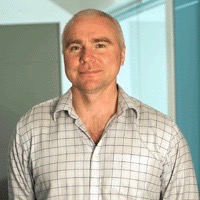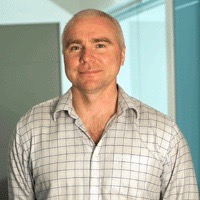
Written by
Associate Professor Bernard Flynn
The Opportunity: The pharmaceutical sector is one of the most profitable industries in the world. The top 10 selling drugs all have annual sales in excess of US$6 bil pa. In the last 20 yrs the sector has been transformed, with many larger Pharma companies preferring to build their pipeline of clinical candidates (drugs in preclinical or clinical development) through acquisition and partnering with smaller companies and research groups that create novel drug molecules with unique mechanisms-of-action. Big-Pharma spend US$50-70 bil pa in partnering/acquisitions deals and increasingly Big-Pharma success is being built on its capacity to win these deals [1]. For example, Gilead has been one of the world’s fastest growing companies over the last 15 yrs [2], based almost entirely on its strategic acquisition of small pharma assets and has now become the second largest pharma in the world by profit (2015/6). Its success and that of others has inspired many other pharma companies to adopt this model, which is know well established across the industry.
The problem / barrier-to-opportunity, “The Valley-of-Death”: In principle, this business model for pharma represents an excellent opportunity for Australia, which has not traditionally had a Pharma industry sector, to leverage its capabilities in drug discovery through the mediacy of spin-out companies and direct licensing of IP to Big-pharma. While an exceedingly attractive and realistic opportunity for Australia, the failure of successive Governments and its medical research funding agencies to understand and/or commit to the requirements of generating and supporting drug discovery and associated IP remains a key barrier to Australia establishing a presence in this industry sector [indicatively: the mcap of all Australian ASX listed Pharma companies is AU$39 bil, AU$32 bil of this is CSL (2016)]. This has created what is often referred to as the “Valley-of-Death”, the gap between the basic research that affords new opportunities for medical science and the translation of this research into a commercially viable products (Figure A), but what actually creates this valley. The main contributor is the absence of funding (and a funding model) for the drug discovery process that bridges these two. There are several key deterrents to both public and commercial sector funding of drug discovery and associated IP-generation in the Australian context (Figure B). In Australia, the major public funder of medical research is the National Health and Medical Research Council (NHMRC) and in the commercial sector it is a small group of venture capital funds. Both groups want returns on their investment and are keen to minimise risks to those returns (Figure B). Though critical to the attainment of new therapies, drug discovery and associated IP protection are not featured in the science-metrics (returns) that drive public-sector funding of medical research in Australia, which is dominated by publications (pub-metrics): number, citation rate, journal quality and impact factor (Figure B) [3]. Often the peak of basic research and associated pub-metrics is in the defining of a new biological target and/or pathway that appears critical to disease progression (Figure B, blue line). Unfortunately, the majority of these target-hypotheses fail to achieve a proof-of-concept (PoC) in either animal models of disease or human patients. Thus, while this science is often 100% successful in attaining its minimal pub-metrics, providing a cost-benefit return to the NHMRC, the overall success rate of its translation into therapy is < 1%, if attempted at all. By focussing only on pub-metrics and other esteem measures, public funds are insulated from the risk profile of translational research. Also, for investigators that pursue drug discovery and engage in IP protection, even if successful, they risk undermining their capacity to generate a suitable body pub-metrics to achieve a fundable track-record, compromising their career path within publicly funded research institutes. For VC groups the equation is even simpler, the success-rate for converting basic science into useful therapies is low, creating a deterrent to investment (Figure B, green line). Additionally, the costs and timeframes are uncertain, potentially compromising the VCs capacity to achieve a profitable exit in a predefined timeframe (5-12 yrs). In short, these projects effectively hold no commercial value until such a time as a drug candidate demonstrates a PoC in an animal model (Figure B, green line). Only at this stage can VCs value a program, calculate an equity position for all stake-holders and plan the project and associated funding requirements out to exit (Big-pharma acquisition or partnering).


The proposed solution, bridging the “Valley-of-Death”: Despite the apparent complexities and risks and our local (Australian) interminable wrangling with the problem, the pathways to addressing the so called Valley-of-Death are actually well-known and affordable, but they do need to be funded. Key to the success is the funding model, project selection and the team. The funding model must reflect the risk profile of the endeavour where funding is tranched against key Go/No-go decision points. Accordingly, continued funding is based on data and its correlation to therapeutic efficacy, safety and IP-status (target product profile), not pub-metrics. These funding decision need to be made on a continual basis, not a 3-5 year block. A critical, but often repeated error, is to select the “best” basic research in the country and block-fund its translation into therapy. Drug discovery researchers operate from a global body of science to create new IP and can move from project-to-project based on Go/No-go decision points. Notwithstanding this potential to be nimble, each project that is committed to needs extensive planning, covering the key biological, clinical, pharmaceutical and commercial aspects. Importantly, the continuation and necessary escalation of funding given to successful projects and the early/immediate termination of unsuccessful projects is essential, a lack of discipline in this undermines the model’s capacity to deal with risk and effectively direct its resources.
Expected returns: Conservative estimates for drug discovery projects successfully achieving a PoC in animals is 1 in 10 and, of these, 1 in 10 will progress through clinical trials to a marketed drug. Assuming a cost-exposure to an unsuccessful discovery project is $600K and the completion of successful project (proof-of-concept in animal models) is $3 mil then each success costs $9 mil. Assuming a cost/investment base of $20 mil per VC-funded drug out to Phase II (exit point) then the total cost to exit for each marketed drug is (10 x 9) + (10 x 20) = $290 mil. Assuming an average deal return of $1bil (up-front + milestones) for each successfully marketed drug then the model is viable: conservatively, $290 mil spend for $1 bil return. Further capital injection ($50-100 mil) to bring the program through to approval will likely yield better returns ($5-20 bil per successful project). The $90 mil in Government funding per successful project is most exposed, as it requires the inventing organisation to hold 8-10% at Phase II exit just to break-even, hence it being termed the Valley-of-Death. The purpose of the Government funding is to bridge this Valley and ensure the commercial/VC sector has access to high quality projects/IP. A failure of the emerging VC-sector to show returns on investment will negatively impact future investment and growth. Notwithstanding what might only be a break-even equation for Government around returns on expenditure for bridging the Valley-of-Death, it has multiple benefits for the public sector:
- Improved medicines
- Better quality/informed basic sciences.
- High-quality jobs and training, creating an ecosystem for entrepreneurs, drug-discovery professionals, company executives and VCs.
- Increased private sector investment for research and development. As above, attracting up to $20 per $1 of Gov investment)
- Tax revenues
- Economic reform, new wealth creation and a shift in the balance of trade in new medicines.
Currently, Australian Governments and NGOs expend $1-2 bil pa in basic research without any expectation of a direct return in the form of new medicines or commercial outcome. Adding to this or redirecting aspects of it ($100-300 mil pa) to bridge the Valley-of-Death will provide transformative medical and economic benefits to Australia.
[2] https://en.wikipedia.org/wiki/Gilead_Sciences
[3] While the NHMRC is seeking to reduce the emphasis on pub-metrics, at the level that research and researchers are evaluated during grant review pub-metrics still dominate assessment.
Join the conversation at NFMRI’s third annual conference, “Philanthropy: Creating Impact and Dancing with Elephants”. The conference will take place on the 21st and 22nd of November 2017 at the Australian National Maritime Museum in Sydney.


